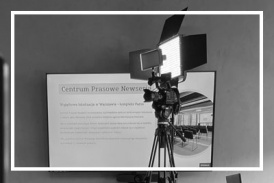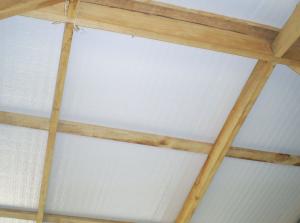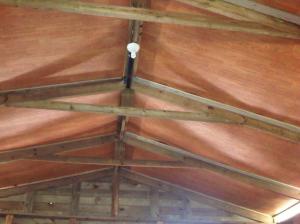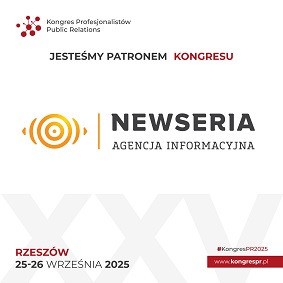Insulation4Less Highlights the Performance and Versatility of Reflective Insulation in Modern Building Applications
Combines Insulation + Radiant Barrier + Vapor Barrier + Air Barrier all in One Product.
HOUSTON, TX, UNITED STATES, April 12, 2025 /EINPresswire.com/ -- Insulation4Less, a leading supplier of energy-efficient insulation solutions, is spotlighting reflective insulation as a practical and versatile alternative in today's building market. As the construction industry evolves to meet growing energy efficiency standards, reflective insulation continues to gain relevance due to its distinct thermal performance in specific use cases.
Reflective insulation, often made of layers of foil bonded to other materials such as polyethylene foam or plastic bubbles, functions by reducing radiant heat transfer—unlike traditional mass insulation, which primarily slows down conductive heat. This makes it particularly effective in hot climates and applications where radiant heat is a significant concern, such as roofs, metal buildings, or pole barns.
One of the most frequently asked questions regarding reflective insulation pertains to its R-value, a measure traditionally used to indicate thermal resistance. While reflective insulation does not have a fixed R-value in the same way fiberglass does, its performance depends heavily on the presence of air space. Notably, the R-value performance of reflective insulation is not affected by humidity, unlike some conventional insulation types whose effectiveness can degrade in moist conditions. This stability in performance makes reflective insulation particularly well-suited for use in high-humidity environments like livestock and agricultural buildings.
Importantly, reflective insulation is also characterized by its low emissivity, typically around 0.03, which means it reflects up to 97% of radiant heat. This property is particularly useful in reducing cooling loads during warmer months.
Unlike fiberglass or foam board products, reflective insulation is lightweight, easy to handle, and does not require protective gear for installation. It also resists mold, mildew, and moisture absorption, making it suitable for humid environments or places prone to condensation issues like metal buildings and pole barns.
Reflective insulation is commonly used in a variety of residential and commercial applications, including:
Metal Buildings
Pole Barns
Roofs
Walls
Crawl spaces
Ceilings
Attics
Garages
Temporary structures
HVAC ducting
Post-frame buildings
Metal roofing systems
Although reflective insulation is not a one-size-fits-all solution and should be evaluated against project-specific needs, it offers significant advantages in scenarios where radiant heat control is paramount. When integrated properly into a building envelope, it can contribute meaningfully to overall thermal performance and occupant comfort.
For more information about reflective insulation products and performance details, visit www.insulation4less.com.
Jonathan Barber
Insulation4Less.com Inc
+1 281-356-0798
email us here
Visit us on social media:
Facebook
X
YouTube
Legal Disclaimer:
EIN Presswire provides this news content "as is" without warranty of any kind. We do not accept any responsibility or liability for the accuracy, content, images, videos, licenses, completeness, legality, or reliability of the information contained in this article. If you have any complaints or copyright issues related to this article, kindly contact the author above.
Adriana Gallardo Featuring in The Hollywood Reporter—A Closer Look at the Woman Behind the Billboards
Dr. Christopher A. Pumill Named 'Up & Coming' NJ Top Doctor
Restaurante de cortes: guía de los cortes más icónicos y su maridaje perfecto
Więcej ważnych informacji
 Jedynka Newserii
Jedynka Newserii

 Jedynka Newserii
Jedynka Newserii

Konsument

Grupa nowych biednych emerytów stale się powiększa. Ich świadczenie jest znacznie poniżej minimalnej emerytury
Przybywa osób, które z powodu zbyt krótkiego czasu opłacania składek pobierają emeryturę niższą od minimalnej. Tak zwanych nowych biednych emerytów jest w Polsce ok. 430 tys., a zdecydowaną większość grupy stanowią kobiety – wskazują badania ekspertów Instytutu Pracy i Spraw Socjalnych. W ich przypadku krótszy okres składkowy zwykle wynika z konieczności opieki nad dziećmi lub innymi osobami w rodzinie. Wśród innych powodów, wymienianych zarówno przez panie, jak i panów, są także praca za granicą lub na czarno oraz zły stan zdrowia.
Media i PR
M. Wawrykiewicz (PO): Postępowanie z art. 7 przeciw Węgrom pokazało iluzoryczność tej sankcji. Unia wywiera naciski poprzez negocjacje nowego budżetu

Przykład Węgier pokazał, że procedura z artykułu 7 traktatu o UE o łamanie praworządności nie ma mocy prawnej z powodu braku większości, nie mówiąc o jednomyślności wśród pozostałych państw członkowskich. Negocjacje nowego budżetu UE to dobry pretekst do zmiany sposobu części finansowania z pominięciem rządu centralnego. Czerwcowy marsz Pride w Budapeszcie pokazał, że część społeczeństwa, głównie stolica, jest przeciwna rządom Viktora Orbána, ale i na prowincji świadomość konsekwencji działań Fideszu staje się coraz większa przed przyszłorocznymi wyborami.
Firma
Blockchain zmienia rynek pracy i edukacji. Poszukiwane są osoby posiadające wiedzę z różnych dziedzin

Zapotrzebowanie na specjalistów od technologii blockchain dynamicznie rośnie – nie tylko w obszarze IT, ale również w administracji, finansach czy logistyce. Coraz więcej uczelni wprowadza programy związane z rozproszonymi rejestrami, które wyposażają studentów w umiejętności odpowiadające wymogom rynku.
Partner serwisu
Szkolenia

Akademia Newserii
Akademia Newserii to projekt, w ramach którego najlepsi polscy dziennikarze biznesowi, giełdowi oraz lifestylowi, a także szkoleniowcy z wieloletnim doświadczeniem dzielą się swoją wiedzą nt. pracy z mediami.




![Nestlé w Polsce podsumowuje wpływ na krajową gospodarkę. Firma wygenerowała 0,6 proc. polskiego PKB [DEPESZA]](https://www.newseria.pl/files/1097841585/fabryka-nesquik_1,w_85,r_png,_small.png)






.gif)

 |
| |
| |
|